
Natural herbicide: discover allelopathic plants!
A natural alternative for weeding without glyphosate
Contents
In nature, and particularly in challenging environments where competition for survival is fierce, it is not uncommon to see plants using genuine chemical weapons to colonise space and appropriate the scarce resources of water and nutrients. The expanses of thyme or rosemary in the Mediterranean scrub are a prime example. The properties of these plants are known as allelopathic. By taking inspiration from nature, the use of such plants allows for the design and development of green spaces and gardens where maintenance is simplified. We invite you to discover them in order to adopt weed-free gardening (or almost)!
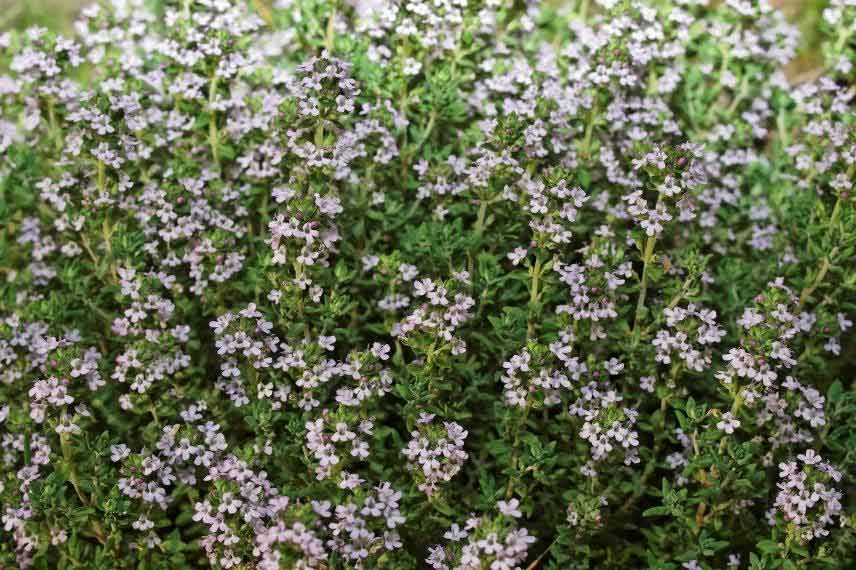
Thyme naturally secretes substances that allow it to avoid competition from other plants
What is an allelopathic plant?
Since antiquity, humans have described the behaviour of certain plants that have the ability to inhibit the growth of other vegetation. The term “allelopathy” was first used in 1937 to describe the phenomenon of competition between plants. It comes from the Greek ‘allêlon’ meaning “reciprocal” and ‘pathos’ meaning “suffering”: it refers to the entire range of chemical interactions of one plant species on others.
Allelopathic plants naturally release chemical compounds that inhibit the germination and development of competing species. This is a great advantage for those who prefer gardening with minimal effort! Taking advantage of the allelopathic power of plants can indeed reduce weeding in the garden as weeds become scarce near these plants. Discover through these tips which plants possess these properties and the principles of allelopathic planting.
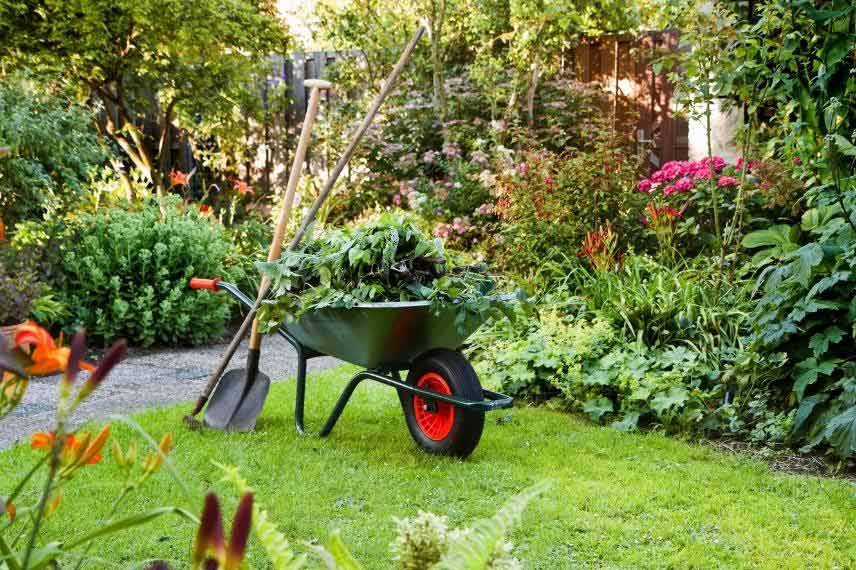
Allelopathy: a clever method to reduce the weeding chore between plants
Trees under which nothing grows
- Eucalyptus are champions of non-competition: very few plants manage to grow beneath their foliage.
- Walnuts release juglone into the soil, inhibiting the growth of other plants.

Walnut and eucalyptus
One should not confuse the properties of these trees with the root competition exerted by other species, such as pines, which also prevent the growth of other plants. The result is the same, but the mechanisms at play are different! By planting these trees, you will choose a space cleared at their base, where only a few resilient plant species may manage to settle.
Friendly allelopathic bushes
Large shrubs – 2 to 4 m
Some large-growing shrubs, such as Laurus nobilis or bay laurel, common myrtles, Pistacia lentiscus, or Atriplex halimus and Atriplex canescens prevent the growth of other plants at their base. Associating them in a free hedge or at the back of a flowerbed will save you a lot of gardening work: limited pruning and weeding guaranteed! These shrubs are very drought-resistant and thrive in poor, well-drained soil. They can tolerate very short frosts of -10°C, down to -12°C or even lower for the ‘Tarentina’ subspecies of Myrtle.
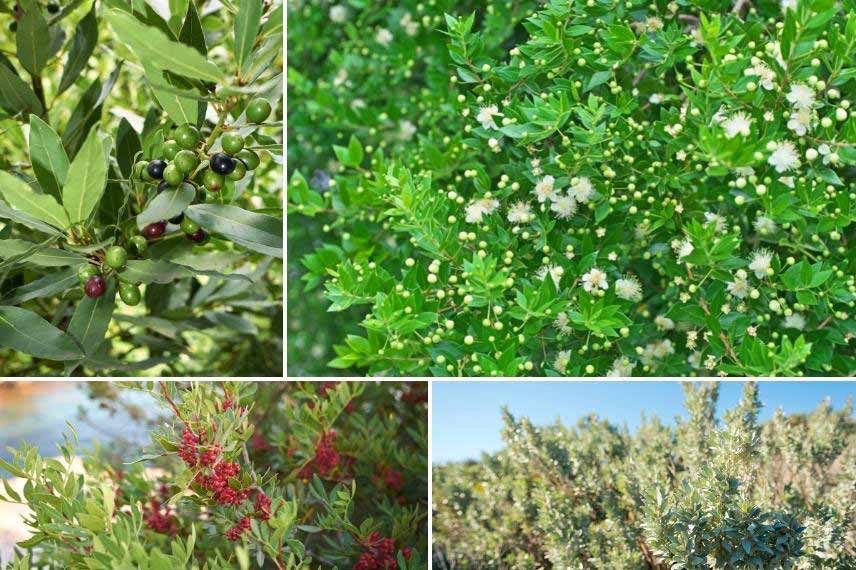
Laurus nobilis, Myrtus communis, Pistacia lentiscus, and Atriplex halimus
Small shrubs and bushes – 1 to 2 m
Cistus are the quintessential allelopathic plants. When their leaves fall to the ground, they release chemical compounds that prevent the germination of other plants. Phlomis, also known as Jerusalem sages, possess similar properties. These sun-loving shrubs create stunning floral displays in the garden from spring onwards. Both are hardy down to -10°C and prefer well-drained soil. Dot your flowerbeds with these moderately growing bushes: their evergreen foliage will provide an interesting base throughout the year.
 Cistus and Phlomis fruticosa
Cistus and Phlomis fruticosa
Read also
Weeding... the natural way!Perennials and herbs that do the cleaning
Perennials
Most lavenders possess naturally weeding properties. Your low-maintenance beds can combine them with the magnificent Clary Sage – Salvia sclarea and Artemisia abrotanum, also known as lemon balm. The grey foliage of the Silver Santolina Santolina chamaecyparissus will be enhanced all summer by the golden yellow flowering of Achillea filipendulina ‘Parker’s Variety’, while Perovskia will point its countless lavender spikes to the hungry pollinating insects alongside the curry plant Helichrysum italicum.
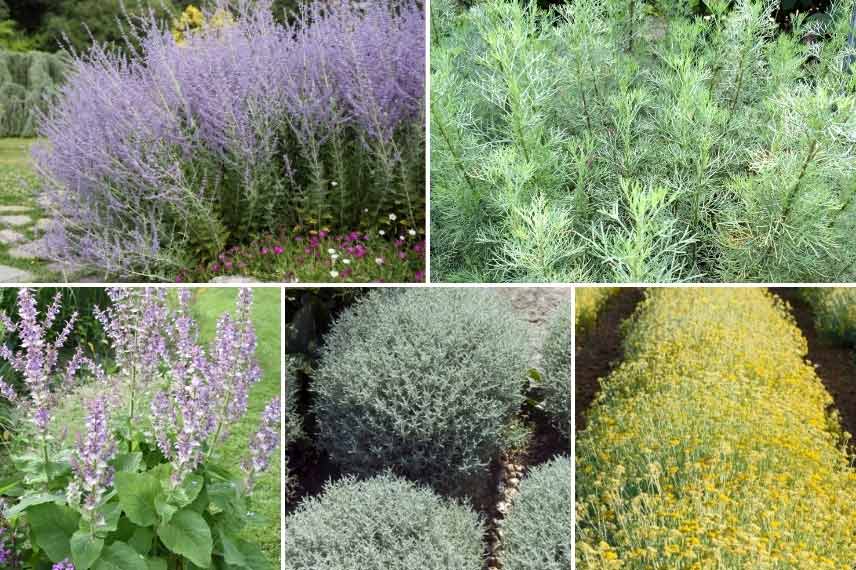
Perovskia, Artemisia abrotanum, Salvia sclarea, Santolina chamaecyparissus and Helichrysum italicum.
Aromatic plants
Your displays can be enhanced by the scents of a few aromatic plants. Many of them exhibit the properties we are interested in and unhesitatingly tidy up around them:
- The rosemaries
- The thymes
- the Common Sage ‘Albiflora’ and Common Sage ‘Berggarten’
- The oregano
- The Hyssop – Hyssopus officinalis
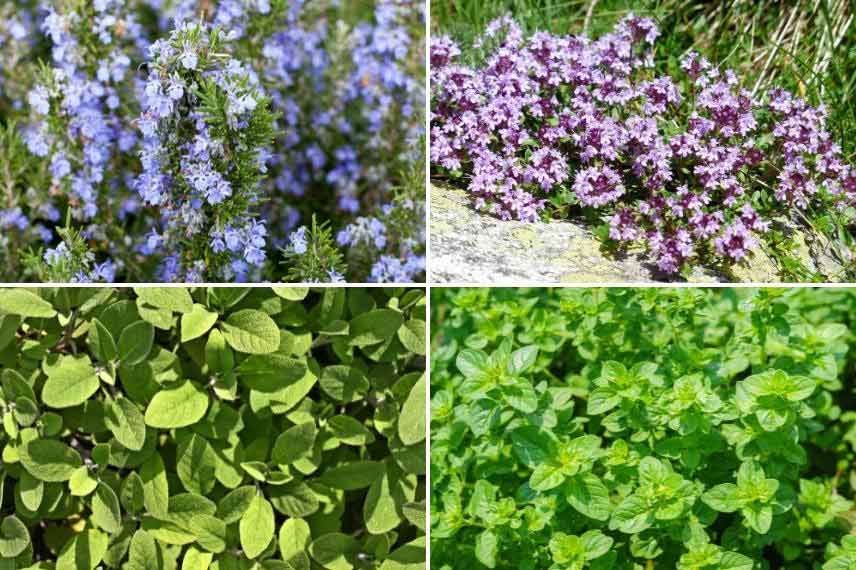 Rosemary, thyme, common sage and oregano
Rosemary, thyme, common sage and oregano
Groundcovers that will weed for you
In the foreground of your borders, the soft and fluffy cushions of Bear’s Ears Stachys byzantina will spread over fifty centimetres, to the detriment of any adventive plants that might try to sneak in! In the same range of grey, Ballota pseudodictamnus can stand out against the clumps of Nepeta faassenii ‘Six Hills Giant’ in bloom all summer until October. Some yarrow, such as Achillea millefolium and Achillea crithmifolia, are just as easy to grow as the previous groundcovers, provided you avoid excess moisture. They also release phyto-toxic compounds that inhibit the development of other plants: your borders will be filled with easy, floriferous plants that require almost no maintenance, even at the edges.
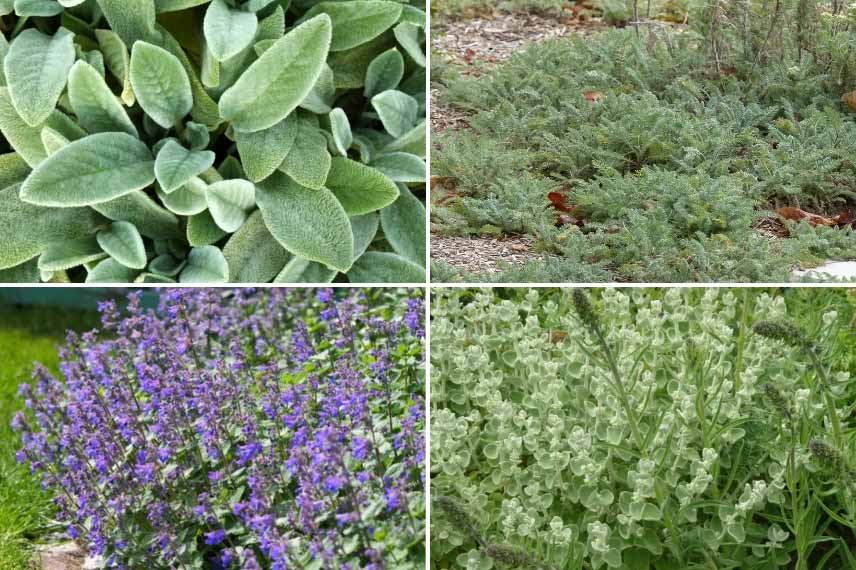
Stachys byzantina, Achillea crithmifolia, Nepeta faassenii ‘Six Hills Giant’ and Ballota pseudodictamnus
How to create a bed of allelopathic plants? The main principles
- If it’s a new bed, start by marking the outline on the ground (using stakes and string, or a hose laid on the ground for sinuous shapes).
- Prepare the soil to your liking by removing the lawn or existing plants (using hand tools or a tiller for the less adventurous). Refine and rake. Carefully remove all plant debris, especially the roots of invasive adventives, such as couch grass, bindweed, or horsetail.
- Arrange the chosen plants, spacing them according to their future size. Place the larger ones at the back and the smaller ones at the front. Respect planting distances to prevent competition between the plants.
- For the first two years on average, weed the uncovered soil manually. You can apply a mineral mulch or a organic mulch to promote soil life and the development of your plants. Moisture will be better retained, and “weeds” will grow less during the development phase of your allelopathic plants.
- Once the plants reach their mature size and cover the entire area, weeding will become much less necessary. Gradually, the “weeding” effect will become apparent, limited to the ground area of the plants. Allow the natural mulch, made up of fallen leaves from your allelopathic plants, to remain on the soil. Their decomposition also releases anti-germinative compounds.
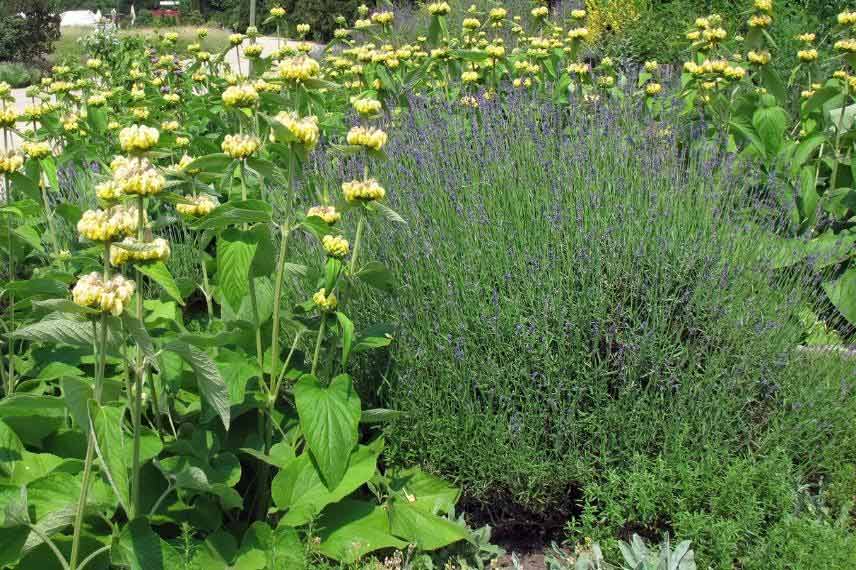 Thanks to allelopathic plants, such as Phlomis or lavender: beautiful flowering beds with minimal weeding in sight.
Thanks to allelopathic plants, such as Phlomis or lavender: beautiful flowering beds with minimal weeding in sight.
For a tailored selection of plants, feel free to use our Plantfit web application!
Sophie’s advice: For allelopathic plants with anti-germinative effects, the impact will be null on undesirable plants that reproduce vegetatively through their roots… couch grass and horsetail, for example, will continue to thrive. Therefore, the preparation phase is crucial to eliminate as many of these adventive roots present in the soil as possible.
- Subscribe!
- Contents
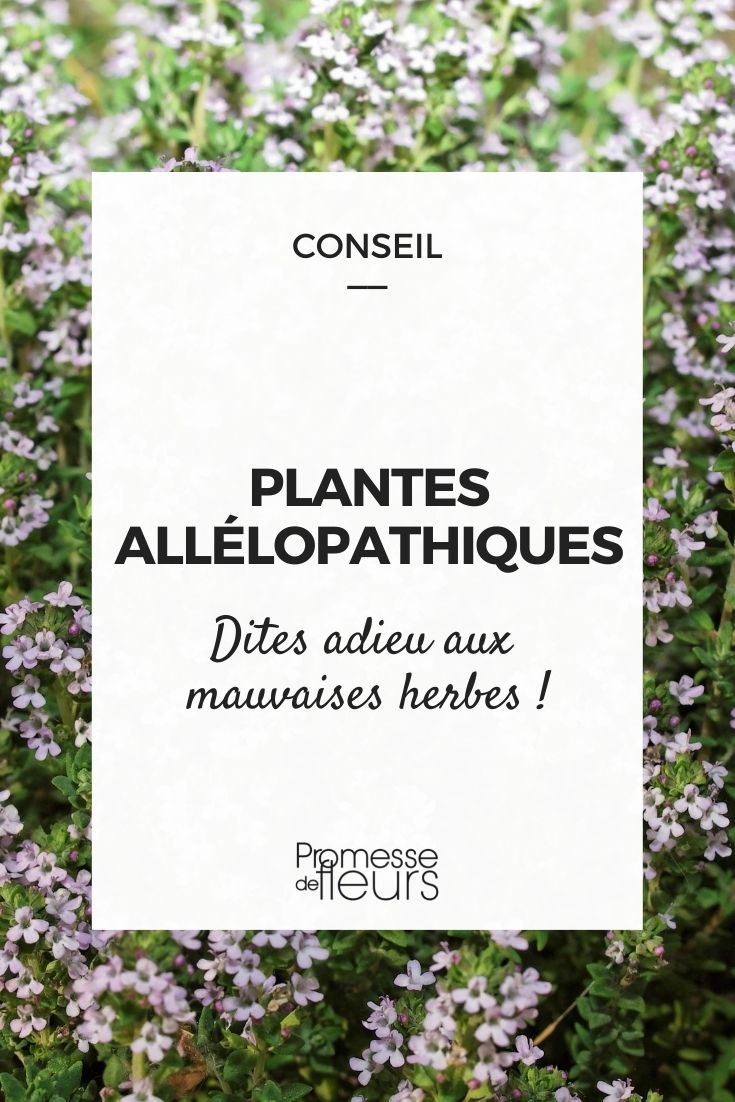































Comments